But peel the layers and beneath lies the real fight: Nitish Kumar versus Nitish Kumar. Because at the heart of this election is the chief minister of two decades and two dominant narratives—his governance record and the transformation of Bihar from a ‘jungle raj’ to a functioning state versus his inability to tackle the throbbing pain of unemployment and a fatigue with his long tenure. This has caused a yearning for badlaav (change).
It is, in a sense, a textbook Indian election— everyday issues that impact voters’ lives dominating the narrative with a healthy dollop of caste arithmetic thrown in. The difference, however, is that this election is defined by a clear generational divide, between those who continue to live with the bitter memories of former RJD supremo Lalu Yadav and his wife Rabri Devi’s regimes, thereby greatly appreciating what Kumar has brought to the table, and those who have little or no recollection of the RJD tenure. For the second cohort, the change under Kumar is neither obvious nor enough.
In a crux, therefore, this election is about what Kumar has done in the past 20 years, and what he hasn’t.
The backdrop
The two-phased assembly election in Bihar that began on 6 November ends 11 November. The state has had a politically tumultuous few years, largely driven by Kumar’s flip-flops and shockingly brazen switches from one alliance to another. Currently, his Janata Dal (United), or JD(U), is in alliance with the Bharatiya Janata Party (BJP) and some smaller regional parties under the National Democratic Alliance (NDA) umbrella, while the RJD and Congress combine is fighting as the Mahagathbandhan (grand alliance).
In the 2020 assembly polls, the NDA won 125 of the state’s 243 assembly seats and a vote share of 37.26%, with the BJP taking 74 seats and the JD (U) winning 43. The opposition, meanwhile, won 110 seats, with the RJD at 75 and the Congress at 19, and a vote share of 37.23%.
These numbers tell us how divided the electoral landscape in the state is, and how negligible the vote share difference between the alliances is. The intricacy of this electoral arithmetic is what makes this election more complex than linear, and the big issues on the ground more pronouncedly determining. To add to it, the debut of former poll strategist Prashant Kishor’s Jan Suraaj Party has meant one more player in this already crowded game.
At the end of it, however, what is serving as the biggest determinant is the sentiment for and against Kumar. The former, giving him a platform to fight on, and the latter, giving Tejashwi Yadav fertile ground to mount his campaign on.
Advantage Nitish
Near Muzaffarpur’s Minapur village, a group of men sip tea in the warm autumn late morning sun and chat about Bihar’s favourite topic—politics. As the conversation steers to who should form the government, their verdict is unanimous—the NDA. “Vikas dikhayi deta hai” (the development is visible), they say.
“We have seen what the state was under the RJD regime. The fact that we have been able to emerge from that horror is in itself a big thing,” says Rajneesh Kumar, 45, who runs a small hardware store. “Nitish Kumar turned the state around. He ushered in the rule of law, developed infrastructure, gave us a wide network of roads, improved the electricity supply, gave water connections, enhanced education and healthcare. He even brought in several women-centric policies. If the RJD comes to power, it will be Bihar’s misfortune,” he adds.
View Full Image
When Kumar took charge of the state in 2005 to begin his first full-term as chief minister, he inherited a dismal state-of-affairs from the previous RJD rule—abject lawlessness, abysmal lack of development and complete state apathy. With his focus on development, Kumar earned the moniker of Sushasan Babu (good governance leader), and his work became a jarring contrast to that of his predecessor. This continues to remain Kumar’s greatest strength and selling point—hissushasan versus the RJD’s jungle raj.
The catchphrase has become a popular way to describe the 15-year RJD rule, infamous for brazen crimes ranging from murder to kidnapping, extortion, dacoity, caste violence and massacres as well as corruption. While Lalu Prasad Yadav served as chief minister from 1990 to 1997, his wife Rabri Devi took charge of the state from 1997 to 2005. The period was also marked by economic stagnation, with the share of Bihar’s nominal Gross State Domestic Product in India’s nominal GDP declining sharply from 4.5% in 1990-91 to 2.8% in the early 2000s.
As a corollary, this happens to be Tejashwi Yadav’s biggest disadvantage—the lingering association with the horrors of the RJD regime, which make it difficult for him to begin on a clean slate at least with those sections of voters that lived through his parents’ rule.
In Jehanabad, Vinay Jaiswal, 52, holds a similar sentiment. “Today, in Bihar, we have six-lane highways. We could not have imagined that 20 years ago. Zero, I repeat zero, work was done by Lalu Yadav. How can Bihar even think of going back to that era?” he questions. Jaiswal was a teacher in a private school and now takes coaching classes for students from standards 6 to 10.
Kumar’s track record with women is an advantage too. He recognized women as a separate, powerful vote bank as long back as 2005 and introduced a slew of policies soon into his term, from free bicycles for school going girls to reservations in governance tiers and government jobs. His controversial liquor prohibition law is also an ode to them. Women, therefore, have steadfastly stood behind him.
In fact, in Bihar, women are known to turn out to vote more enthusiastically than men in recent years, presumably to throw their weight behind Kumar. In the 2010 assembly election, women voter turnout (54.5%) surpassed that of men (51.1%) for the first time. In the 2020 assembly elections, women voter turnout, at 59.7%, remained higher than that of men at 54.5%.
Women continue to remain his cheerleaders. His most recent initiative—transfer ₹10,000 each to women beneficiaries under the Mukhyamantri Mahila Rozgar Yojana—seems to have landed well.
In Motihari’s Pipra village, a young Shilpi Kumari sits on the verandah of her marital home, flanked by her four-year-old child and visiting mother. Widowed at a young age, Kumari would be worried about her future, but for Kumar. “I will vote for the first time, and I am clear I will vote for Nitish Kumar and Modi. Both these leaders do so much for women, from toilets to children’s education and other aid, we have got everything,” she says. “I am just waiting to receive my ₹10,000 promised by the chief minister, and with that, I will start a small beauty parlour.”
Kumari says she has already taken a training course. “I know that will secure my future,” she adds, while trying to console her crying child.
Kumari highlights another massive advantage the chief minister enjoys—the right allies. BJP and Prime Minister Narendra Modi remain very popular, and many opting for NDA say they are doing so because of the Prime Minister. The BJP, therefore, adds serious heft to Kumar’s game. More so, the NDA has a broader umbrella caste coalition of upper castes, extremely backward classes (EBCs) and a section of Dalits.
View Full Image
For Yadav, however, his ally is less of an asset and more a liability. The Congress has little or no traction on the ground and even with respect to caste arithmetic, adds precious little. The Mahagathbandhan is relying largely on a Muslim-Yadav coalition, comprising about 30% of the population.
Kumar’s ‘clean image’ is yet another boost for his campaign. The striking contrast with Lalu Yadav’s corrupt image (remember the fodder scam?) isn’t lost on voters. “There are no corruption charges against him, no allegations of impropriety, and no history of promoting a useless dynastic rule,” says Minti Devi of Manpur in Gaya, who runs a small tea and snack stall. As she sells litti chokha along with piping hot tea in earthen cups to a steady stream of customers, Devi adds with a twinkle in her eye, “Neta aisa hi hona chahiye (that is how a leader ought to be).”
Advantage Tejashwi
If the 20-year-rule is his strength, it is also Kumar’s burden. A two-decade anti-incumbency isn’t to be taken lightly. There may not be boiling anger against him, but there is fatigue, and disillusionment even.
Fatigue can be tricky to interpret—it can often see the incumbent through, but at times, can engineer a regime change, even if by a whisker. The 2018 Madhya Pradesh assembly election is one such example. There was fatigue but not massive anger with the incumbent Shivraj Singh Chouhan government, and the BJP ended up losing the election to the Congress by a mere five seats.
Several sections of voters are hankering after badlaav (change). They insist that a change is needed every now and then to keep parties on their toes. This yearning is Yadav’s biggest advantage, and gives him the perfect opportunity to swoop in.
As per the Election Commission (EC), the state has about 1.41 million first-time voters aged 18 to 19 years old. There are vast sections of the electorate who have little recollection of the RJD regime and for whom, that stigma doesn’t exist. For them, what Kumar has done seems inadequate, and most importantly, unemployment has emerged as a big pain-point. Jobs, therefore, are a big rallying point this election and Kumar’s dismal track record in addressing outward migration is a big plus for Yadav.
View Full Image
As per the Periodic Labour Force Survey (PLFS), April-June 2025, Bihar’s Labour Force Participation Rate in the 15-29 age group was at 33.9%, much lower than the national average of 42%. This figure was even more dismal for women—a mere 13.6%, significantly below the national average of 22.1%.
Bihar’s unemployment rate in the same period, according to current weekly status, was 5.2% across all age groups, lower than the national number of 5.4%. However, the picture changes when it comes to youth unemployment rate. In the age group of 15-29 years, Bihar had an unemployment rate of 16.7%, compared to the all-India figure of 14.6%.
Outward migration from the state remains alarmingly high, and in absolute numbers, second only to Uttar Pradesh.
Yadav has been clever enough to latch on to that, talking about jobs vociferously, as has Prashant Kishor. Yadav, in fact, has made a dramatic promise to provide one government job for every household in the state if voted to power. While his detractors and pro-NDA voters scoff at the lack of pragmatism of his promise, for several youngsters in the state, this is a shining ray of hope.
“There are absolutely no jobs in Bihar. All youngsters are forced to leave the state. How can this be sustainable? At least Tejashwi Yadav is talking about providing jobs,” says Jeetendra Kumar of Bettiah, a farmer.
Meanwhile, Kumar’s age (74), and health issues, concern a section of the voters. Some feel most of his remarkable work was done in his first five years as chief minister.
His pet project—the liquor prohibition law—has also emerged as a sore point, with many claiming it has done nothing but create a ‘smack’ culture, referring to drugs serving as an alternative to alcohol. “All this prohibition, etc., is just hogwash. What has it achieved? Now young boys are taking to smack. It has made addicts out of youngsters in Bihar,” says a visibly agitated Pintu Kumar, 37, of Danapur, Patna, who works in a stationery store.
While caste configuration may be in Kumar’s favour, his ally’s aggressive right-wing majoritarianism has meant the minorities en bloc going towards the opposition alliance. The chief minister, himself, is not seen to be communal in his politics, but the BJP’s brand of politics has made some steer clear of the alliance. With the RJD’s history of being steadfastly secular, Yadav has an edge.
“Mandir-masjid karne se pet bharta hai kya (Does the politics of religion help feed you)? Why vote for Nitish if his side keeps drumming up such issues?” asks Abhishek Kumar of Hajipur. Kumar, 24, is a BCom graduate but is currently unemployed.
View Full Image
Bihar beyond caste
While caste remains a pervasive reality in the social, political and electoral milieu of Bihar, a small change seems to be creeping in. Political parties are now beginning to look beyond caste and towards creating more cross-cutting constituencies.
Nitish Kumar began doing that with women two decades ago, and this voting bloc consequentially became a relatively caste-neutral one, thereby helping him expand his constituency. Both Prashant Kishor and Tejashwi Yadav are now attempting to do that with the youth—cultivating the electorate to bridge divides of other identities by addressing issues that affect its future.
To that extent, Bihar could be changing. Slowly, but systematically. In a state where caste has overridden much else for generations, tangibles like women-centric policies, youth concerns, jobs, infrastructure, industry, corruption and vikas (development) are today emerging as critical moving parts. They now have the attention of the political players. More importantly, they now have the attention of voters.
In the backdrop of a slowly changing Bihar, as the chief minister’s track record of good governance collides with the narrative of his failure to address the unemployment crisis, what will eventually tilt the verdict will be his ability to convince the voter yet again that despite his flaws, he remains Bihar’s Sushasan While caste remains a pervasive reality in the social, political and electoral milieu of Bihar, political parties are now beginning to create more cross-cutting constituencies..




